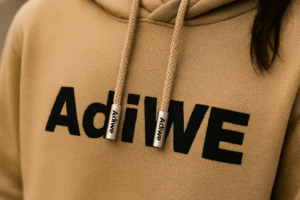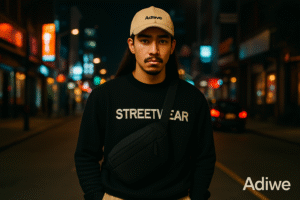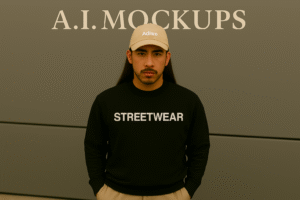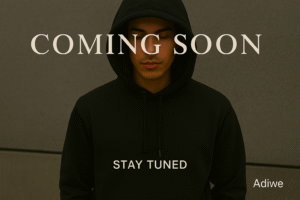Want your streetwear to truly stand out? Generic branding won't cut it. Custom labels and tags make your apparel uniquely yours, instantly upgrading its appeal.
Custom labels and tags are vital for branding streetwear; they communicate your brand's identity, quality, and story directly on the garment, enhancing perceived value and creating a memorable customer experience.
As Sunny from Adiwe, a B2B wholesale streetwear factory in China, I've seen countless brands transform their apparel with thoughtful branding details. We specialize in top-quality, personalized streetwear for clients like "Fifty Fifty" in England. They understand that design and quality are paramount, and that extends to the smallest elements like labels and tags. These details are not just add-ons; they are crucial touchpoints that speak volumes about your brand's commitment to craftsmanship and its unique identity. Let's explore how you can effectively brand your custom streetwear.
1. What Types of Labels Are Crucial for Your Streetwear Line?
Confused about which labels your garments actually need? Missing key labels can look unprofessional. Understanding the essentials ensures compliance and brand cohesion.
Essential streetwear labels include a main brand label (woven or printed), a care and content label, a size label, and optionally, a country of origin label or special feature tags.
Dive deeper Paragraph:
When we work with brands at Adiwe, getting the labels right is a key part of the personalized design process. Each label serves a distinct purpose, contributing to the overall professionalism and appeal of your t-shirts, hoodies, and other streetwear items.
Essential Label Breakdown:
- Main Brand Label: This is your primary identifier. Usually placed at the inside neck, it prominently features your logo and brand name. Woven labels (like damask or satin) offer a premium feel, which clients like "Fifty Fifty" appreciate for their quality-focused brand. Printed labels can be softer and are good for items worn close to the skin.
- Care and Content Label: Typically found on an inside seam, this label is legally required in many regions. It provides washing instructions (e.g., "Machine wash cold," "Tumble dry low") and fabric composition (e.g., "100% Cotton," "80% Cotton / 20% Polyester"). Accurate care instructions prolong garment life, reflecting well on your brand's quality.
- Size Label: Clearly indicates the garment's size (S, M, L, XL, etc.). This can be integrated into the main brand label or be a separate small tab, often placed alongside or below the main label.
- Country of Origin Label: "Made in China," for example. This is also a legal requirement in many markets. It can be part of the care label or a separate small tag.
- Optional Special Feature Labels: Small tags highlighting unique aspects like "Organic Cotton," "Recycled Materials," or a specific technology used in the fabric. These add value and speak to specific customer interests.
At Adiwe, we ensure these labels are produced to your exact specifications, reflecting the top quality and craftsmanship your brand stands for.
2. How Can Hang Tags Tell Your Brand's Unique Story?
Think hang tags are just for prices? You're missing a huge branding opportunity. A well-designed hang tag can captivate customers before they even try on the garment.
Hang tags are powerful mini-brochures for your streetwear, conveying brand story, ethos, material quality, care tips, and even linking to your digital presence through QR codes.
!
Dive deeper Paragraph:
Hang tags are so much more than a price indicator; they are a prime piece of marketing real estate attached directly to your product. For trend brands and clothing lines that want to connect with their audience, the hang tag is a fantastic tool. I've seen our clients, especially those targeting young, brand-conscious consumers, use hang tags very effectively.
Maximizing Hang Tag Impact:
- Brand Narrative: Use a panel to share a short version of your brand's mission, inspiration, or the story behind the collection. This creates an emotional connection.
- Material Highlights: If you're using premium or sustainable fabrics (something we can source at Adiwe), highlight this. For example: "Crafted from heavyweight organic cotton."
- Design Philosophy: Briefly explain what makes your designs unique – perhaps the complex craftsmanship or personalized design elements that we help bring to life.
- QR Codes: Link to your website, Instagram, or a specific landing page. This bridges the physical product with your online world.
- Unique Shapes and Materials: Don't stick to a standard rectangle. Consider custom die-cut shapes, thicker cardstock, textured paper, or even materials like recycled plastic or thin wood to make your hang tag memorable. Think about unique strings or pins for attachment too.
A thoughtfully designed hang tag, like those we help our clients create, enhances the perceived value and shows attention to detail, which is crucial for brands like "Fifty Fifty" that focus on design and quality.
3. What Are the Best Placement Strategies for Labels and Tags?
Unsure where to put your labels and tags for the best effect? Poor placement can irritate customers or hide your branding. Strategic positioning enhances both comfort and visibility.
Optimal label placement considers wearer comfort and brand visibility; neck labels are standard, while hem, sleeve, or side seam labels offer subtle branding. Hang tags are best on prominent, non-intrusive spots.
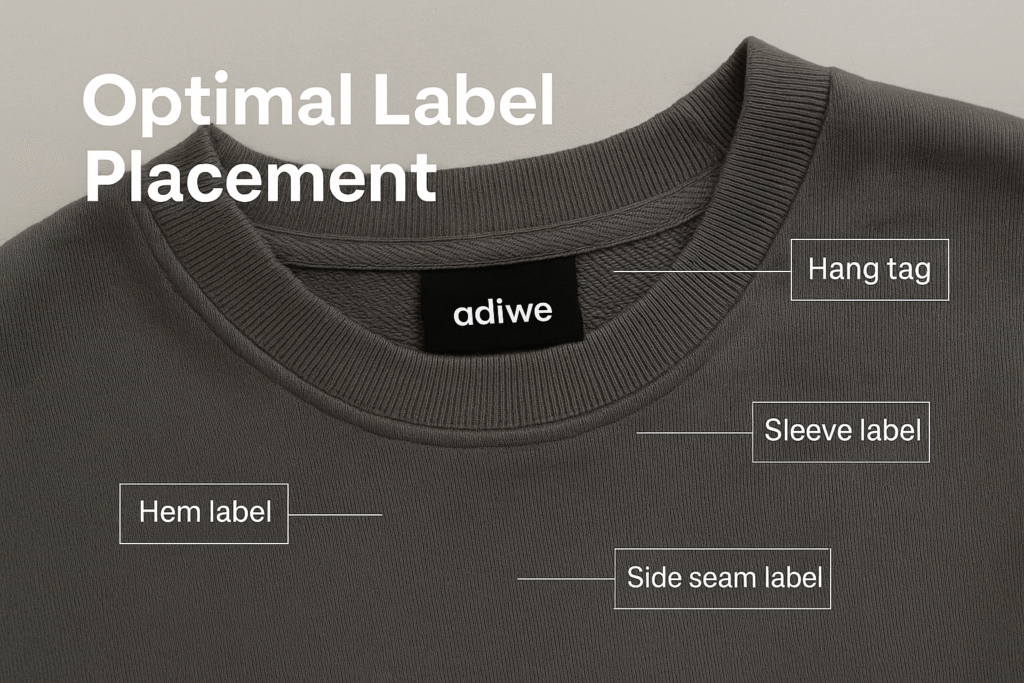
Dive deeper Paragraph:
The placement of your labels and tags isn't arbitrary. It affects how your customer experiences the garment and how your brand is perceived. At Adiwe, we guide our clients on best practices based on garment type and brand aesthetic.
Strategic Placement Guide:
| Location | Label Type(s) | Pros | Cons |
|---|---|---|---|
| Inside Neck | Main Brand, Size | Traditional, expected, highly visible when garment is off | Can be itchy if material/stitching is rough |
| Outside Neck (Back) | Small Logo Tab, Detail Label | Subtle branding, unique touch, visible when worn | Less common, may not suit all designs |
| Bottom Hem | Small Brand Tab, Woven Logo | Discreet branding, adds a quality detail, less likely to irritate | Less immediately visible than neck |
| Sleeve Cuff | Small Logo Tab, Embroidered Detail | Unique branding point, visible during wear | Can interfere with rolling sleeves |
| Side Seam (Internal) | Care Label, Content Label, Origin | Standard, keeps important info accessible but hidden | Can be bulky if too many labels |
| Side Seam (External) | Small Brand Tab | Modern, subtle branding detail | May catch on things |
For hang tags, common placements include attaching them to the main neck label, through a buttonhole on shirts or jackets, or on a zipper pull of a hoodie. The key is to make it easily noticeable but also easy for the customer to remove without damaging the garment. We always consider these factors to ensure the final product is perfect for our clients, whether they are established clothing brands or emerging KOLs.
4. Which Materials and Designs Make Your Branding Pop?
Do your labels and tags look cheap or generic? This undermines your brand. Choosing the right materials and designs ensures your branding elements reflect your streetwear's quality.
High-quality materials like woven damask, soft satin, or unique options like leather or silicone, combined with clear, consistent design (logo, font, color), make branding elements stand out.
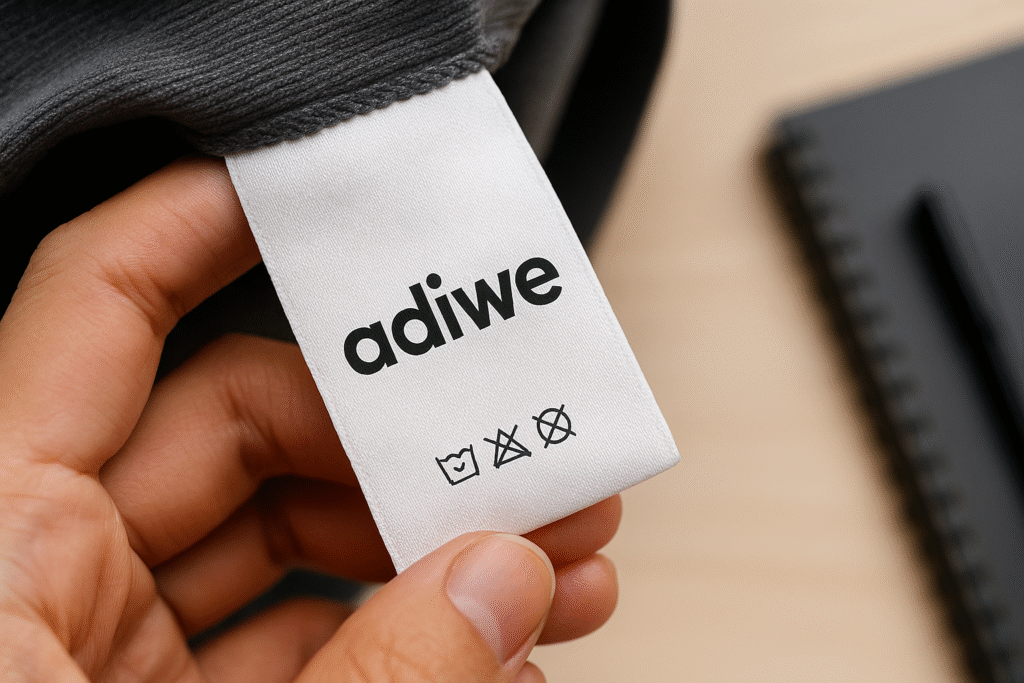
Dive deeper Paragraph:
The tactile experience of a label or tag can significantly influence a customer's perception of quality. As a factory focused on top-quality streetwear, Adiwe understands the importance of these details. If a client like "Fifty Fifty" emphasizes intricate design and craftsmanship in their hoodies, their labels should mirror that.
Material & Design Choices:
- Woven Labels:
- Damask: High density, fine detail, premium feel. Excellent for intricate logos.
- Satin: Smooth, shiny surface, soft feel. Good for neck labels where comfort is key.
- Taffeta: More basic, less detail than damask, but cost-effective.
- Printed Labels: Often on cotton, satin, or nylon. Good for soft feel, detailed multi-color graphics, and care labels.
- Specialty Materials:
- Leather/Faux Leather Patches: Add a rugged, premium touch to outerwear or denim.
- Silicone/Rubber Labels: Modern, durable, good for sporty or technical streetwear. Often raised or 3D.
- Metal Tags/Badges: Offer a high-end, durable branding element, great for accessories or premium pieces.
- Design Elements:
- Logo Clarity: Ensure your logo is legible, even at small sizes.
- Font Consistency: Use fonts that align with your overall brand identity.
- Color Palette: Match your brand colors or use contrasting colors for impact. Consider the garment color too.
- Shape and Finish: Custom shapes, folded edges, or embossed details can elevate the look.
Investing in better materials and thoughtful design for these small components makes a big difference. It’s one of the customizable features we pride ourselves on offering.
5. How Do Thoughtful Labels and Tags Add to Perceived Value?
Wondering if investing in custom labels is worth it? Absolutely. These details communicate quality and care, significantly boosting how customers see your brand and products.
Thoughtful, high-quality labels and tags act as subconscious cues of superior craftsmanship and brand integrity, justifying a higher price point and fostering customer loyalty.

Dive deeper Paragraph:
When a customer picks up one of your custom t-shirts or hoodies, the labels and tags are among the first things they interact with. These elements are silent communicators of your brand's standards. If they feel cheap or look poorly designed, it can undermine the perceived quality of the entire garment, no matter how good the fabric or construction is. This is particularly true for brands like "Fifty Fifty" whose customers expect high design and quality.
Enhancing Perceived Value:
- Signal of Quality: A well-made woven label or a thick, nicely printed hang tag suggests that the brand cares about every detail, implying the garment itself is also made with care.
- Brand Storytelling: As discussed with hang tags, these elements can tell a story, creating a connection that goes beyond the physical product. This adds intangible value.
- Professionalism and Legitimacy: Custom branding makes your streetwear line look like a serious, established brand, not a generic or amateur operation. This builds trust.
- Unboxing Experience: For online sales, the unboxing experience is crucial. High-quality tags and labels contribute positively to this first physical interaction with your brand.
- Justifying Price: Premium labels and tags can subtly reinforce a premium price point. If it looks and feels expensive down to the details, customers are more willing to pay more.
At Adiwe, we encourage our clients to see labels and tags not as an expense, but as an investment in their brand's image and perceived value. It's part of creating that "very trendy" and top-quality product that today's discerning streetwear consumer is looking for.
Conclusion
Custom labels and tags are essential for branding your streetwear. They define your identity, enhance quality perception, and tell your unique story, turning garments into true brand statements.

